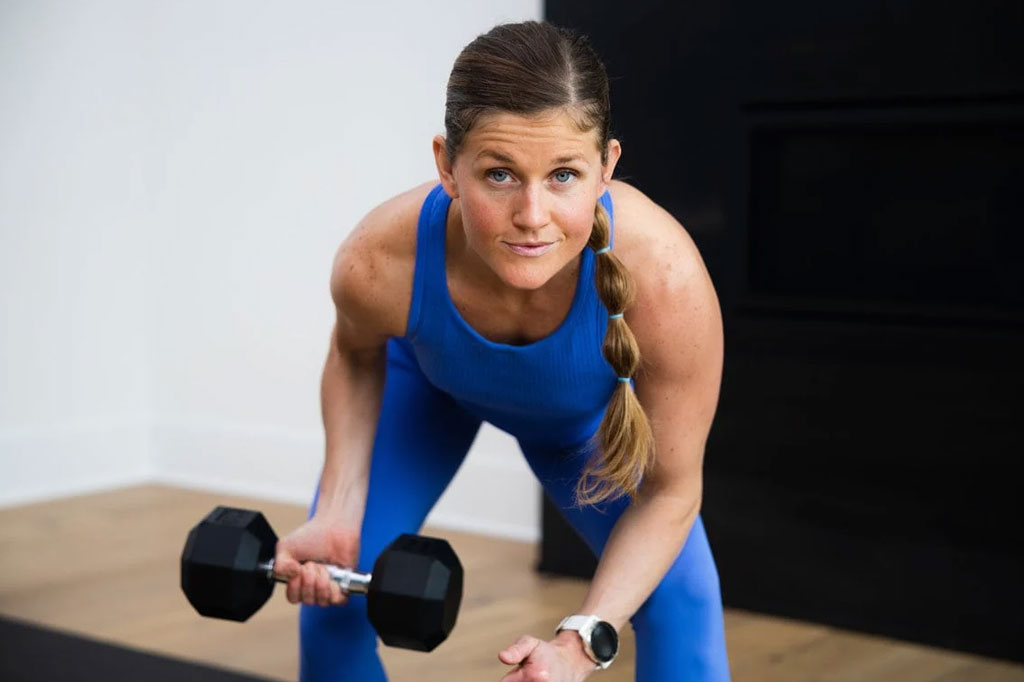Are you searching for a workout that transcends the ordinary, blending adventure, strength building, and cardio into one dynamic activity? Look no further than rucking exercise—a hidden gem in the realm of fitness routines. Imagine walking through picturesque landscapes, your back adorned with a weighted backpack, as each step not only propels you forward but also elevates your fitness journey to unparalleled heights.
Rucking, often overlooked in the sea of trendy workouts, emerges as a powerhouse exercise regimen, seamlessly merging the simplicity of walking with the effectiveness of resistance training. In this comprehensive guide, we uncover the secrets behind rucking—a holistic workout that challenges both body and mind, offering a plethora of benefits that extend far beyond the typical gym session.
Join us as we navigate through the realms of rucking exercise, exploring its benefits, muscle-engaging prowess, its synergy with running, weight loss potential, and a meticulously crafted workout plan. Get ready to embark on a journey that not only transforms your physique but also invigorates your spirit for adventure and fitness.
Discover the untapped potential of rucking exercise—where every step leads to a stronger, fitter, and more resilient you.
Table of Contents

What is Rucking Exercise
Rucking exercise is a form of exercise that involves walking or hiking with a weighted backpack, known as a rucksack or a ruck. It’s a simple yet effective workout that can improve cardiovascular endurance, build strength, and burn calories. The weight in the backpack can vary depending on your fitness level and goals but typically ranges from 10 to 50 pounds or more.
The primary idea behind rucking exercise is to add resistance to your walking or hiking, making it more challenging and engaging various muscle groups, including your legs, core, and upper body. It’s a versatile exercise that can be adjusted to different terrains, speeds, and durations, making it suitable for people of various fitness levels.
Rucking exercise is not just a physical exercise; it can also be a mental challenge, especially during longer distances or when dealing with rough terrain. Many people find rucking exercise enjoyable as it allows them to combine a workout with exploring nature or their local surroundings.
Remember, when starting rucking exercise or any new exercise regimen, it’s essential to begin slowly, gradually increase the weight, and pay attention to proper posture and form to prevent injuries.
Is Rucking Exercise a Good Workout
Absolutely, rucking exercise stands as an exceptional workout choice due to its multifaceted benefits. This unique blend of cardiovascular endurance and strength training offers a holistic approach to fitness. Here’s why rucking is considered a stellar workout:
Rucking Exercise Benefits
- Full-Body Engagement: Rucking isn’t solely about leg movement. It engages various muscle groups, including legs, core, back, shoulders, and arms. The weighted backpack adds resistance, effectively turning a simple walk into a full-body workout.
- Cardiovascular Endurance: Walking with added weight significantly elevates heart rate and oxygen consumption, enhancing cardiovascular health and endurance. It’s a low-impact exercise that can be adapted to various fitness levels.
- Strength Building: The added weight challenges muscles, promoting strength development over time. This incremental resistance aids in muscle toning and building, particularly in the lower body and core.
- Versatility: Rucking isn’t confined to a gym; it can be done anywhere—through parks, urban landscapes, or natural trails. Its adaptability to different terrains and inclines adds an element of versatility to your workout routine.
- Mental Resilience: Beyond physical benefits, rucking can bolster mental toughness. Long-distance rucking or navigating challenging terrains can cultivate mental resilience and endurance, fostering a strong mind-body connection.
- Accessibility and Cost-Effectiveness: Compared to many gym memberships or specialized equipment, rucking requires minimal investment. A sturdy backpack and some weight (like books or water bottles) are often all that’s needed to start.
In essence, rucking exercise offers a balanced blend of cardio and strength training, making it an appealing workout for those seeking an effective and versatile fitness regimen. Its simplicity, coupled with its ability to engage multiple muscle groups, renders it a standout choice in the realm of fitness activities.

What Muscles Does Rucking Work
Rucking is a fantastic full-body workout that engages various muscle groups, creating a comprehensive exercise experience. Here are the primary muscles targeted during a rucking session:
Lower Body Muscles
- Quadriceps: These muscles at the front of the thigh engage when extending the knee while stepping forward.
- Hamstrings: Located at the back of the thigh, they assist in knee flexion and hip extension during each step.
- Glutes: The gluteal muscles, including the gluteus maximus and medius, power hip extension and help stabilize the pelvis.
- Calves: The calf muscles (gastrocnemius and soleus) play a role in pushing off the ground with each step.
Core Muscles
- Abdominals: These muscles stabilize the torso and pelvis during rucking, preventing excessive swaying or arching of the back.
- Obliques: Side-to-side movements while carrying weight engage the oblique muscles, aiding in stability.
Upper Body and Back Muscles
- Trapezius: The trapezius muscles, especially the upper portion, engage in stabilizing the shoulders and upper back.
- Rhomboids: These muscles, located between the shoulder blades, help maintain posture and shoulder stability.
- Deltoids: The deltoid muscles in the shoulders assist in supporting the weight of the backpack.
- Arms and Forearms: Carrying the weighted backpack engages the muscles of the arms and forearms to some extent, especially during elevation changes or adjustments in the load.
Rucking’s effectiveness lies in its ability to engage multiple muscle groups simultaneously, offering a well-rounded workout experience. This engagement not only strengthens muscles but also enhances endurance and stability throughout the body.
Can Rucking Improve Running
Absolutely, integrating rucking exercise into your fitness routine can potentially improve your running performance in several ways:
Endurance Enhancement
Rucking challenges your cardiovascular system and builds endurance similar to running. The added resistance from the weighted backpack during rucking can effectively increase your stamina, translating to improved endurance while running.
Strength Building
Rucking engages various muscle groups, particularly in the lower body and core. The strength developed through regular rucking sessions can complement your running by enhancing leg strength, stability, and overall muscle endurance. Stronger muscles contribute to better running form and efficiency, potentially reducing the risk of injury.
Mental Toughness
Rucking, especially over longer distances or challenging terrains, cultivates mental resilience. This mental toughness can translate to improved mental endurance during running, helping you push through discomfort and fatigue.
Active Recovery
Using rucking as a form of active recovery between intense running sessions can aid in reducing muscle soreness and stiffness. It allows for a lower impact workout while still engaging muscles, promoting recovery without overloading the joints.
Rucking vs Running for Cardio
Rucking and running are both effective forms of cardiovascular exercise, but they differ in several aspects, each offering unique benefits:
Rucking exercise for Cardio
- Resistance Training: Rucking involves walking with added weight, which increases the workload on your muscles. This resistance element makes it a cardio workout that also engages various muscle groups.
- Lower Impact: Compared to running, rucking is generally lower impact. The weight of the backpack can reduce the impact on joints, making it a more accessible option for individuals with joint issues or those looking for a lower-impact cardio alternative.
- Muscle Engagement: Rucking engages not only your cardiovascular system but also multiple muscle groups, providing a more comprehensive workout that can aid in strength development.
- Adaptability: Rucking can be done in various terrains and environments, making it versatile and adaptable to different fitness levels and preferences.
Running for Cardio
- High Intensity: Running typically involves higher intensity and impact compared to rucking. It elevates heart rate faster, making it an efficient cardio workout for burning calories and improving cardiovascular endurance.
- Calorie Burn: Running at a moderate or high intensity tends to burn more calories per unit of time compared to rucking, making it a popular choice for those focused on weight loss.
- Pure Cardiovascular Focus: While running primarily focuses on cardiovascular endurance, it doesn’t engage as many muscle groups as rucking does.
Choosing Between Rucking exercise and Running
The choice between rucking and running for cardio depends on personal preferences, fitness goals, and individual circumstances. Rucking offers a full-body workout with less impact, making it appealing for those seeking a comprehensive exercise routine or looking to reduce joint stress. On the other hand, running may be preferable for those aiming for higher calorie burn and focusing solely on cardiovascular fitness.

Can Rucking exercise Help You Lose Weight
Yes, rucking exercise can be an effective component of a weight loss regimen. Here’s how it contributes to weight management:
Calorie Expenditure
Rucking involves walking with added weight, which increases the energy expenditure compared to regular walking. The additional resistance from the weighted backpack elevates your heart rate, helping you burn more calories during the activity.
Increased Intensity
The added weight during rucking increases the intensity of the workout compared to regular walking, potentially leading to a higher calorie burn per session. This can contribute to creating a calorie deficit, which is essential for weight loss when combined with a balanced diet.
Full-Body Engagement
Rucking engages multiple muscle groups, including the legs, core, and upper body, due to the added weight resistance. Engaging more muscles translates to a higher overall energy expenditure, potentially aiding in weight management.
Accessibility and Sustainability
Rucking is accessible and can be incorporated into daily routines, such as walking to work or hiking with a weighted backpack. Its simplicity and adaptability make it a sustainable exercise option for many individuals.
Important Consideration
While rucking can contribute to weight loss, it’s important to emphasize that sustainable weight management involves a combination of factors, including regular exercise, a balanced diet, adequate sleep, and stress management. Weight loss occurs when there’s a calorie deficit, so pairing rucking with healthy eating habits is crucial for achieving and maintaining weight loss goals.
Incorporating rucking into your fitness routine, along with other forms of exercise and a balanced diet, can contribute positively to weight management and overall health.
Rucking exercise Calories Burned
The number of calories burned during a rucking workout can vary based on several factors, including the individual’s weight, the duration of the ruck, the speed, the incline, and the weight of the backpack. On average, rucking burns calories at a moderate rate, combining elements of cardiovascular exercise with strength training due to the added resistance.
As a general estimate, a person weighing around 155 pounds can burn approximately 300-400 calories per hour during a moderate-paced rucking session with a 20-30 pound backpack. However, this number can fluctuate significantly based on individual factors and the intensity of the workout.
For a more accurate estimation of calories burned during rucking, using fitness trackers, heart rate monitors, or calorie calculators specifically designed for walking or hiking activities can provide a better idea based on your personal metrics and exertion level.
Remember, the calorie burn is just one aspect of rucking’s benefits. Its ability to engage multiple muscle groups, promote cardiovascular health, and contribute to overall fitness makes it a valuable exercise beyond calorie expenditure.
Rucking exercise Workout Plan
Here’s a rucking exercise workout plan designed to help you gradually build endurance and strength:
Week 1-2: Getting Started
Day 1: Introduction to Rucking
- Duration: 20 minutes
- Weight: Start with 10-15 pounds in your backpack
- Intensity: Easy-paced walk on flat terrain
Day 2: Rest or Light Activity
Day 3: Increasing Duration
- Duration: 25-30 minutes
- Weight: Maintain 10-15 pounds
- Terrain: Vary terrain slightly, including some inclines
Day 4: Rest or Light Activity
Day 5: Adding Weight
- Duration: 25 minutes
- Weight: Increase to 15-20 pounds
- Intensity: Maintain a consistent pace with varied terrain
Day 6-7: Rest or Light Activity
Week 3-4: Progression and Variation
Day 1: Extended Duration
- Duration: 30-35 minutes
- Weight: Maintain 15-20 pounds
- Terrain: Introduce longer inclines and varied surfaces
Day 2: Rest or Light Activity
Day 3: Increased Weight Challenge
- Duration: 30 minutes
- Weight: Increase to 20-25 pounds
- Intensity: Maintain a brisk pace on varied terrain
Day 4: Rest or Light Activity
Day 5: Intensity Variation
- Duration: 35-40 minutes
- Weight: 20-25 pounds
- Terrain: Mix uphill climbs and flat surfaces for intervals
Day 6-7: Rest or Light Activity
Week 5-6: Advancing Intensity
Day 1: Extended Duration with Weight
- Duration: 40-45 minutes
- Weight: Maintain 20-25 pounds
- Intensity: Focus on maintaining a steady pace on varied terrains
Day 2: Rest or Light Activity
Day 3: Intense Challenge
- Duration: 45 minutes
- Weight: Increase to 25-30 pounds
- Terrain: Incorporate challenging uphill sections
Day 4: Rest or Light Activity
Day 5: Endurance Push
- Duration: 50 minutes
- Weight: 25-30 pounds
- Intensity: Maintain a consistent pace, incorporating both inclines and declines
Day 6-7: Rest or Light Activity
Gradually increasing duration, weight, and terrain challenges while maintaining proper form is crucial. Adjust the plan according to your fitness level and listen to your body to prevent overexertion or injury. Always warm up before rucking and cool down afterward to optimize the workout’s effectiveness.









